Divide the number 999,999,999,999,999,999,999,998,999,999,999,999,999,999,999,999 into 1 and express the result as a decimal expansion, and you’ll find the Fibonacci sequence presented in tidy 24-digit strings:
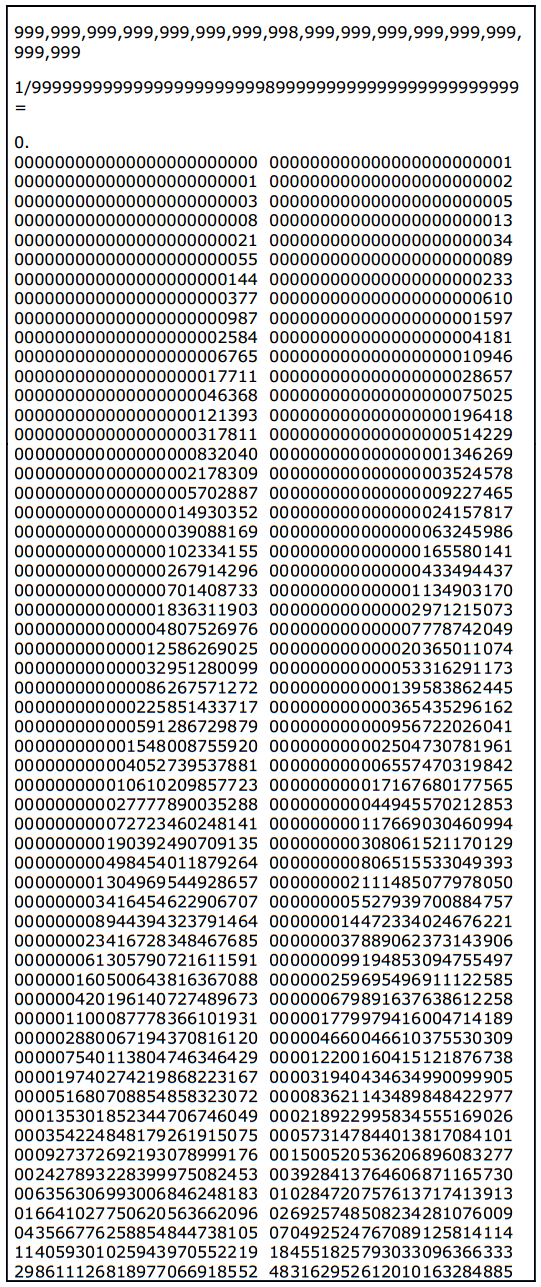
(Thanks, David.)
Divide the number 999,999,999,999,999,999,999,998,999,999,999,999,999,999,999,999 into 1 and express the result as a decimal expansion, and you’ll find the Fibonacci sequence presented in tidy 24-digit strings:

(Thanks, David.)

Amateur magician Oscar Weigle invented this surprising effect in 1949. Assemble a deck of 20 playing cards, 10 red and 10 black, in strictly alternating colors. Hold this deck under a table. Now turn over the top two cards as one, place them on top, and cut the deck. Repeat this procedure as many times as you like — turn two, cut, turn two, cut. When you’ve finished, the deck will contain an unknown number of reversed cards, distributed randomly.
Now, still holding the deck under the table, shift the top card to the bottom, then turn over the next card and place it on the table. Do this repeatedly — shift a card to the bottom, then reverse the next card and put it on the table — continuing until you’ve put 10 cards on the table. Surprisingly, these cards are sorted by color — the face-up cards are of one color, and the face-down ones are of the other.
You’re still holding 10 cards under the table. Divide these into two stacks and weave them together under the table randomly. Do this as many times as you like — divide the 10 cards into two groups and merge them together however you like, so long as no card is turned upside down. Turn over the packet and shuffle it in the same way a few more times. Give it a final cut if you like.
Now deal these cards out as before: Shift the top card to the bottom, reverse the next card and put it on the table. Like the first group, this one will sort itself by color, with one color face up and the other face down.
Suppose we put eight white and two black balls into a bag and then draw forth the balls one at a time. If we repeat this experiment many times, which draw is most likely to produce the first black ball?
Most people answer 4, but in fact the first black ball is most likely to appear on the very first draw:
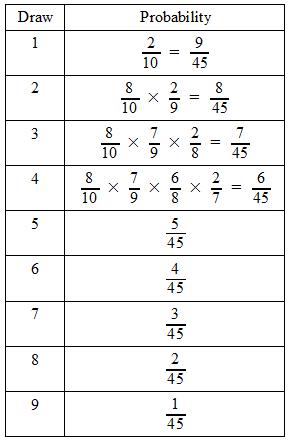
By symmetry, the second black ball is most likely to appear on the final draw.
(A.E. Lawrence, “Playing With Probability,” Mathematical Gazette, vol. 53 [December 1969], 347-354.)

If every pair of people in a group have exactly one friend in common, then there’s always one person who is a friend to everyone.
This rather heartwarming fact was proven by Paul Erdős, Alfréd Rényi, and Vera T. Sós in 1966. It’s sometimes more cynically known as the paradox of the politician.
The Erdős proof uses combinatorics and linear algebra, but in 1972 Judith Longyear published a proof using elementary graph theory.
See The Elevator Problem.
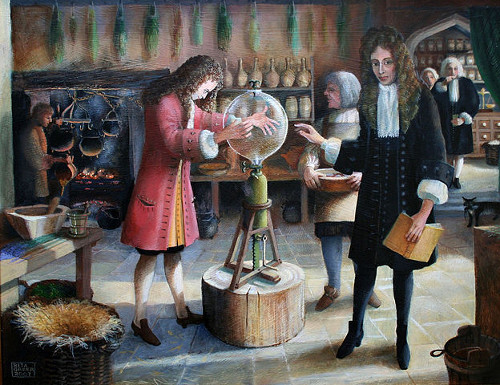
“The origin of science is in the desire to know causes; and the origin of all false science and imposture is in the desire to accept false causes rather than none; or, which is the same thing, in the unwillingness to acknowledge our own ignorance.” — William Hazlitt
Three coins are lying on a table: a quarter, a half dollar, and a silver dollar. You claim one coin, I’ll claim the other two, and then we’ll toss all three. A coin that lands tails counts zero, and a coin that lands heads wins its value (in cents, 25, 50, or 100) for its owner. Whichever of us has the larger score wins all three coins. If all three coins land tails then we toss again.
Which coin should you claim to make the game fair — that is, so that each of us has an expected win of zero?
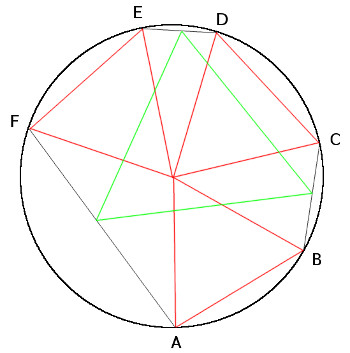
Arrange three congruent equilateral triangles so that their corners meet at a point, like the red triangles above. The arrangement doesn’t have to be symmetric; the triangles can even overlap. Now draw lines BC, DE, and FA to complete a hexagon inscribed in a circle. The midpoints of these three lines will form the vertices of an equilateral triangle.
That’s called the asymmetric propeller theorem, and it’s been known since the 1930s. But in 1979 Beverly Hills dentist and geometry enthusiast Leon Bankoff told Martin Gardner of some further discoveries. Bankoff never found time to write them up, so after the dentist’s death in 1997 Gardner published them in the College Mathematics Journal:
Given all this flexibility, Gardner asked, do the propellers even have to be triangles? It turns out that the answer is yes. Still, the discoveries above form a fitting tribute to Bankoff, whom Gardner called “one of the most remarkable mathematicians I have been privileged to know.”
(Martin Gardner, “The Asymmetric Propeller,” College Mathematics Journal 30:1 [January 1999], 18-22.)
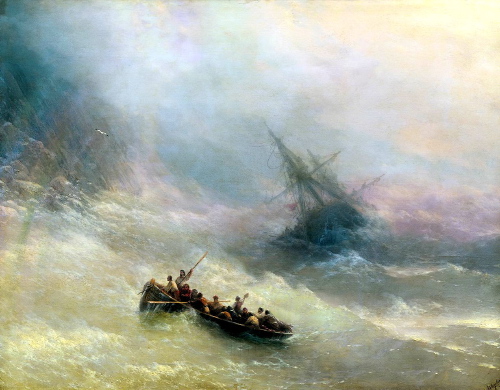
It was a good answer that was made by one who when they showed him hanging in a temple a picture of those who had paid their vows as having escaped shipwreck, and would have him say whether he did not now acknowledge the power of the gods, — ‘Aye,’ asked he again, ‘but where are they painted that were drowned after their vows?’ And such is the way of all superstition, whether in astrology, dreams, omens, divine judgments, or the like; wherein men, having a delight in such vanities, mark the events where they are fulfilled, but where they fail, though this happens much oftener, neglect and pass them by.
— Francis Bacon, Novum Organum, 1620
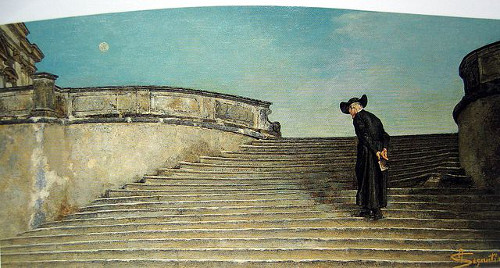
Imagine a staircase with 1001 stairs, numbered -500 to 500. You’re standing in the middle, on stair 0, and you want to reach the top. On each step you can play either of two coin-flipping games — if the result is heads then you move up a step; if it’s tails then you move down a step:
Both of these are losing games — if you played either game 1 or game 2 exclusively, you’d eventually find yourself at the bottom of the staircase. But in 1996 Spanish physicist Juan Parrondo found that if you play the two games in succession in random order, keeping your place on the staircase as you switch between them, you’ll rise to the top of the staircase. It’s not, properly speaking, a paradox, but it’s certainly counterintuitive.
This example is from David Darling’s Universal Book of Mathematics. (Thanks, Nick.)
We’ve mentioned before that you can estimate π by dropping needles on the floor. (Reader Steven Karp also directed me to this remarkable solution, from Daniel A. Klain and Gian-Carlo Rota’s Introduction to Geometric Probability [1997].)
Here’s a related curiosity. If a circle of diameter L is placed at random on a pattern of circles of unit diameter, which are arranged hexagonally with centers C apart, then the probability that the placed circle will fall entirely inside one of the fixed circles is

If we put k = C/(1 – L), we get
![]()
And a frequency estimate of P will give us an estimate of π.
Remarkably, in 1933 A.L. Clarke actually tried this. In Scripta Mathematica, N.T. Gridgeman writes:
His circle was a ball-bearing, and his scissel a steel plate. Contacts between the falling ball and the plate were electrically transformed into earphone clicks, which virtually eliminated doubtful hits. With student help, a thousand man-hours went into the accumulation of N = 250,000. The k was about 8/5, and the final ‘estimate’ of π was 3.143, to which was appended a physical error of ±0.005.
“This is more or less the zenith of accuracy and precision,” Gridgeman writes. “It could not be bettered by any reasonable increase in N — even if the physical error could be reduced, hundreds of millions of falls would be needed to establish a third decimal place with confidence.”
(N.T. Gridgeman, “Geometric Probability and the Number π,” Scripta Mathematica 25:3 [November 1960], 183-195.)